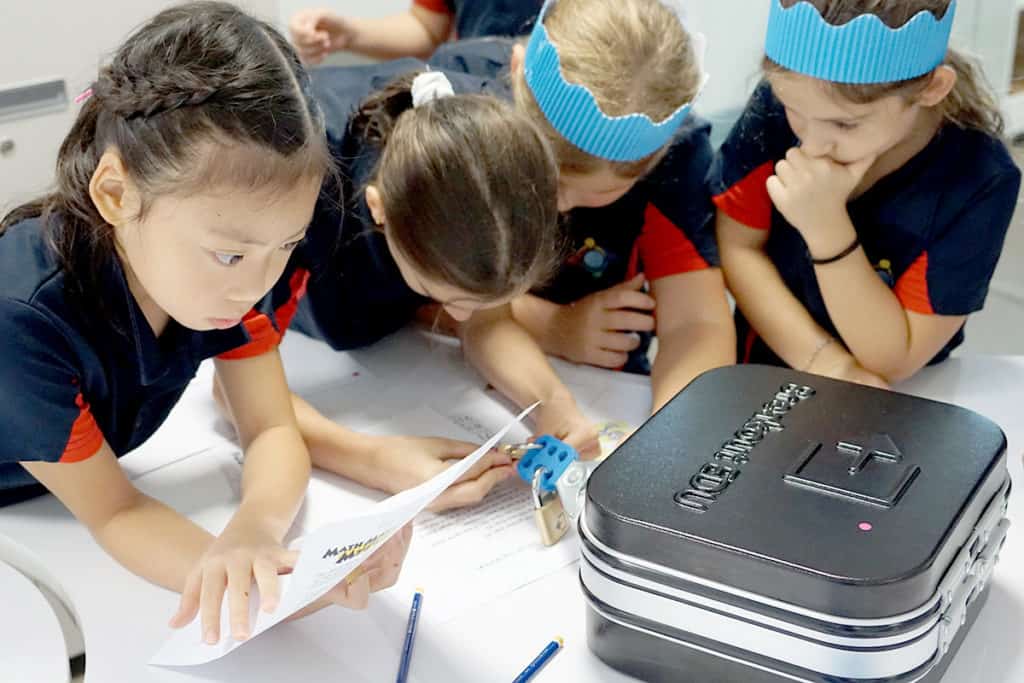By Sebastien Barnard, Head of Marketing Communications and Admissions
For some time now the acronym STEM, (Science Technology Engineering and Math) also known as STEAM, (the A was added to represent the integration of Art) has been bouncing around the corridors of educational institutions.
However, STEM has long been an area of some consternation for some educators. Focused on how the content and processes of four disparate and yet integrated learning areas can be taught at the same time, today educators are looking at project-based learning that can increase student interest in science, technology, engineering, and math because they involve students in solving authentic problems, working with others, and building real solutions. It is through integrated STEM projects that this type of learning can occur.
We know that students learn by taking what they know and then building on it. We know that the holy grail of education—the ability to transfer understanding from one experience or domain to another—is facilitated by discussions around concepts. We have cellular evidence that we build memories by making connections and building rich networks of associations and multiple pathways for access. Concepts help this happen; they are the superhighways of learning. An integrated STEM project approach provides the backdrop for this style of teaching and learning.
What we are discussing here is a teaching approach that allows students to apply their skills and knowledge to solve problems in contexts that are relevant to them. It answers the age-old question from school kids: ‘Why do I need to learn this?‘.
A crucial component of learning, for all children in school, into university and beyond is providing interdisciplinary integration of subjects to solve real-world problems. This means students need to access knowledge and skills from two or more disciplines to complete a task. At leading international schools the integration into the curriculum of a STEM or STEAM, approach is clearly identified and encouraged.
STEM itself should not be viewed as a new subject in an already crowded curriculum, or purely for those students who need to be extended. Teachers build upon the learning taking place in the classroom. STEM is about giving student opportunities to apply the skills and knowledge they have learned in different contexts, enhanced with a STEM focus.
Students are given open-ended tasks that can be solved using cross-curricular skills that they have been learning in regular classes. Students make connections between subjects’ using this interdisciplinary and transdisciplinary learning approach, grasping and appreciating why they are learning.
For example, primary years students can use mini-robots to complete a golf-course challenge. Students utilise their mathematical skills by counting shots on each hole and working out averages for their game. They use ICT skills to connect and control the robots and present their work. Their mathematical skills are required again to present data in tables and graphs. All the while, they are further developing key attributes, such as being an inquirer, communicator and through reflection.
Rarely outside of schools do we simply calculate averages from a random set of numbers; why would we? However, by using an integrated STEM project approach to learning, it provides purpose and context and is more likely to reinforce a concept.
For this approach to be successfully implemented, it is vitally important for schools to have skilled and knowledgeable teachers who can address the needs of all students in a supportive and resource-rich environment. Solving problems that are relevant to them.
Students are encouraged to apply skills they learned in all their classes to the open-ended, creative exercises they are given. This interdisciplinary approach to education allows students to hone their analytical thinking skills, while simultaneously providing them with the resources needed to develop creative reasoning. Not only will they learn the “traditional” skills they’ll need to thrive in their careers, but they’ll also enjoy learning and finding creative solutions for pressing real-world problems.
Most importantly, the best schools are those that allow students to make a mess and make mistakes throughout the learning process. After all, students need to explore their creativity to discover hidden talents. That creativity is also vital for students’ future careers – even leaders in STEM career fields require creative thinkers to provide new perspectives and approaches to solving problems. Finally, to achieve all these things, schools must provide a learning environment that makes students feel comfortable and confident.
The integration of STEM based project learning into a curriculum based on student led inquiry and concept-driven education helps students develop structured inquiry into big ideas that matter and then help them assess how much they really understand through a rich and varied programme of assessment—some of it potentially highly digital—that allows flexible choice of content that supports conceptual learning. These are 21st-Century requirements for teachers engaged with future students being born now, who will probably live into the 22nd century.
